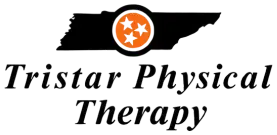Table of Contents
Pre- and postoperative rehabilitation are physical therapy programs designed to help individuals improve their fitness and well-being before and after surgery. While postoperative rehabilitation is more commonly known, preoperative rehabilitation, also known as prehabilitation, is equally important in preparing the body for the stress and strain of major operations. At Tristar Physical Therapy, our team excels in both pre- and postoperative rehabilitation to support patients in their recovery journey.
What is Preoperative Rehabilitation?
Preoperative rehabilitation aims to enhance an individual’s fitness and function before surgery, helping them prepare their body for the upcoming operation. Research has shown that preoperative rehabilitation can reduce postoperative recovery times and alleviate patients’ anxiety about the procedure.
Before surgery, the affected areas often experience a reduction in strength, function, and motion. Muscles surrounding the painful area may undergo atrophy, leading to a loss of size and strength. Additionally, joints may lose flexibility, and neuromuscular activity at the surgical site decreases after an injury. If surgery is delayed, the entire body can experience a decline in fitness and muscle tone.
Preoperative rehabilitation plays a crucial role in addressing these issues. It aims to reduce swelling, pain, and loss of motion while improving muscle tone and neuromuscular activity. The specific form of preoperative rehabilitation varies depending on factors such as current fitness, age, and the type of surgery required. Your therapist may prescribe exercises to maximize your range of motion before surgery and provide guidance on using assistive devices like walkers or crutches.
What Does Postoperative Rehabilitation Involve?
Postoperative rehabilitation focuses on helping patients regain their previous level of physical fitness and function after surgery. The goal is to facilitate a full recovery, enabling individuals to return to work, sports, and recreational activities.
At Tristar Physical Therapy, our team provides personalized one-on-one treatment to closely monitor your recovery progress. We maintain regular communication with your surgeon to ensure that your rehabilitation aligns with tissue healing for optimal recovery. Various techniques may be employed during postoperative rehabilitation, including:
- Active and passive stretching: Stretching exercises to improve flexibility and range of motion.
- Muscle-strengthening exercises: Targeted exercises to rebuild weakened muscles and restore strength.
- Endurance training: Gradual increase in physical activity to rebuild stamina and endurance.
- Balance exercises: Activities to improve balance and stability, reducing the risk of falls.
- Massage therapy: Therapeutic massage techniques to promote relaxation, reduce muscle tension, and aid in healing.
- Therapeutic ultrasound: The use of ultrasound waves to promote tissue healing and decrease inflammation.
- Electrical stimulation: Application of electrical currents to stimulate muscles and promote muscle re-education.
During your initial postsurgical visit, your therapist will work with you to establish postoperative rehabilitation goals and review any necessary precautions. They will also provide you with a personalized home exercise program to maintain your progress between physical therapy sessions.
Conclusion
Pre- and postoperative rehabilitation are vital components of a successful surgical recovery. Preoperative rehabilitation helps prepare the body for surgery, reducing recovery times and anxiety. Postoperative rehabilitation focuses on restoring physical fitness and function, enabling individuals to resume their daily activities. AtTristar Physical Therapy, our team is dedicated to providing comprehensive pre- and postoperative rehabilitation services to support your recovery journey. Contact us today or request an appointment via our online booking form to learn more about the benefits of post operative physical therapy rehabilitation.

